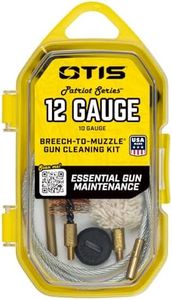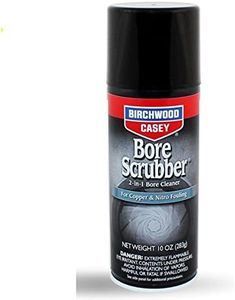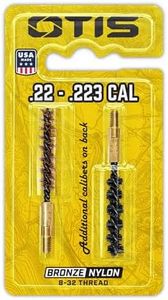We Use CookiesWe use cookies to enhance the security, performance,
functionality and for analytical and promotional activities. By continuing to browse this site you
are agreeing to our privacy policy
4 Best boresighters
From leading brands and best sellers available on the web.Buying Guide for the Best boresighters
Choosing a boresighter is a helpful step for anyone who needs to align the sights or scope of a firearm with the barrel, making shooting more accurate and saving you time and ammunition. Instead of trial and error at the shooting range, a boresighter helps you get much closer to the ideal point of aim from the very start. When picking the right boresighter for your needs, it's important to understand how they work, what types are available, and which features matter most for your type of firearm and shooting activities.Type (Laser vs. Optical)There are two main types of boresighters: laser and optical. A laser boresighter projects a laser beam down the barrel so you can align your sights or scope to where the bullet should hit, while an optical boresighter uses a lens system that fits into the barrel and requires you to visually align crosshairs with the scope. Laser types are quick and easy, letting you make adjustments even in lower light, and are widely popular for their speed and convenience. Optical models work without batteries and suit users who prefer a more mechanical, no-fuss approach. To choose, think about where you’ll be sighting in your firearm — if you want something fast and easy at home or outdoors, a laser is often simpler. If you prefer a purely mechanical method, choose optical.
Caliber CompatibilityCaliber compatibility refers to which gun calibers a boresighter will fit. Some boresighters are made for a single caliber, while others come with adjustable fittings or inserts so you can use them with a wide range of firearms. If you own several firearms in different calibers, a universal or multi-caliber boresighter makes sense for flexibility, while a single-caliber model is ideal if you consistently use one type of firearm. Before you buy, make sure the product matches your gun's caliber, so it will fit securely and work accurately.
Ease of UseEase of use describes how simple it is to set up and operate the boresighter. Some models are plug-and-play, requiring little more than inserting the device and turning it on, while others may need assembly or multiple steps. If you’re new to using boresighters, look for clear instructions, simple operation, and less need for extra tools or parts. Think about your comfort level with handling gear—more complex models might offer added features, but a straightforward device is better if you want something quick and foolproof.
Durability and Build QualityDurability refers to how well the boresighter can withstand regular use and whether it's well-built from sturdy materials like metal or strong plastics. A durable boresighter will last longer and maintain accuracy over time, even if handled roughly or used outdoors. If you expect to use your boresighter frequently or in various environments, look for one made with high-quality materials and solid construction. If it's just for occasional use, this might be less critical, but it’s always better to invest in something that won’t fail when you need it.
Battery Life (for Laser Models)Battery life is important for laser boresighters, as they rely on a battery to project the laser beam. A longer battery life means you can use it more often without constantly replacing batteries, which is both convenient and cost-effective. If you’ll be using your boresighter for multiple firearms or for extended sighting sessions, opt for a model known for efficient power use and easy battery replacement. For occasional use, battery life is still relevant, but less of a deciding factor.
Visibility and PrecisionVisibility and precision means how clearly you can see the laser dot or optical reference and how fine the adjustments you can make are. A brighter, sharper laser is easier to see during the day and helps make more precise adjustments. Optical models should have clear markers or crosshairs that are easy to align with your scope. If you plan to sight in outdoors in various lighting conditions, choose a model with high visibility. For indoor or controlled settings, standard models may suffice, but if you value pinpoint accuracy, aim for models known for their precision.




